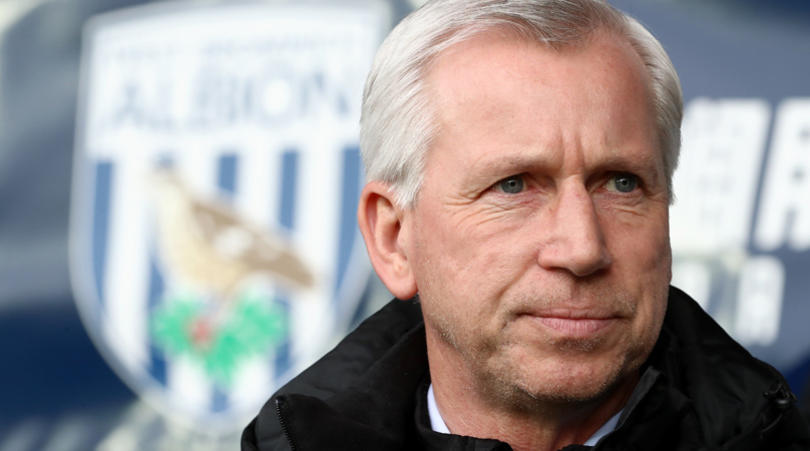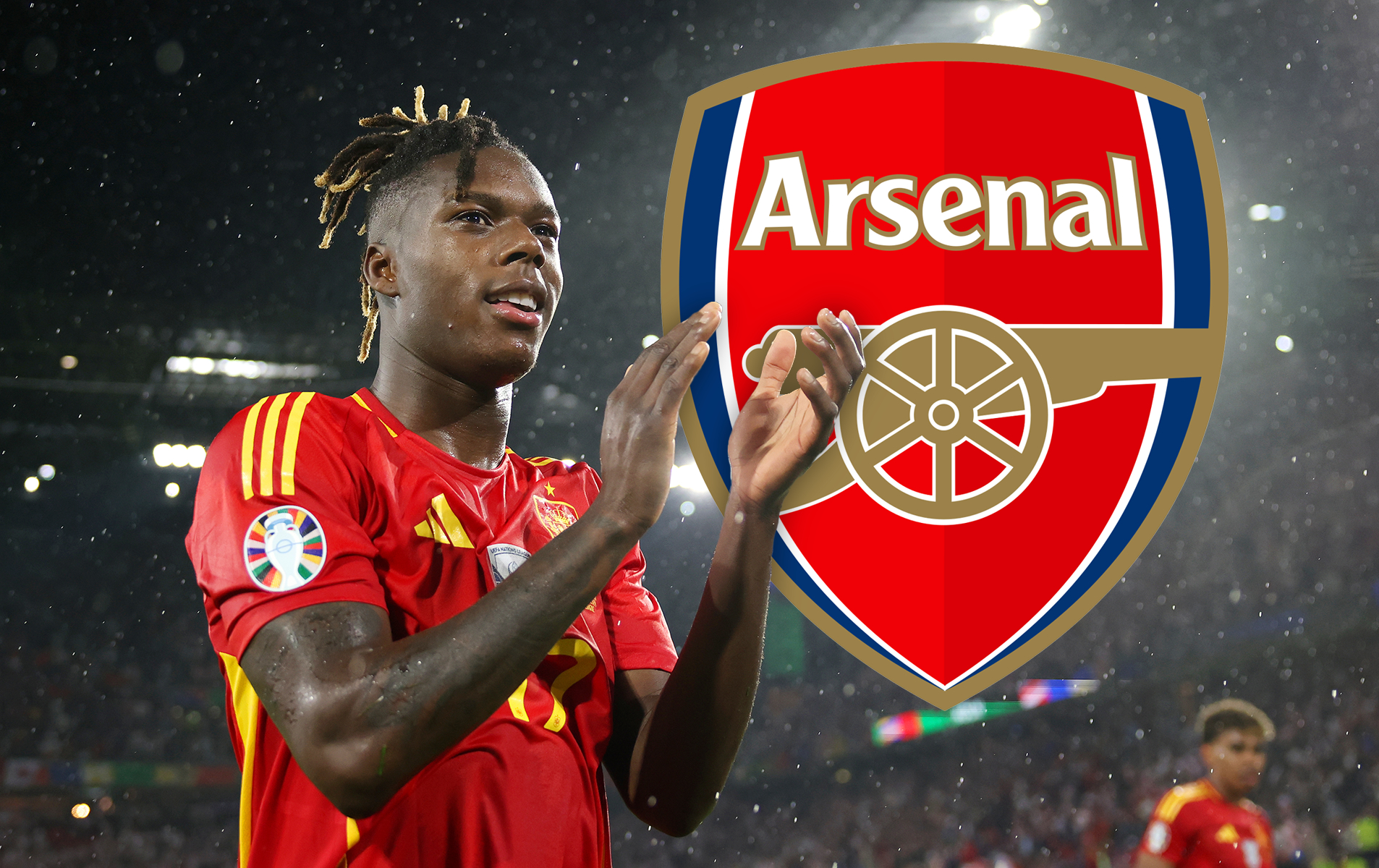EVERY Premier League club’s biggest strength and weakness this season
Almost a third of the way through the campaign, we now have a pretty good idea of how the 20 top-flight teams are shaping up. Sadly for Slavisa Jokanovic, it turned out the answer was 'pretty rubbish actually' for Fulham...
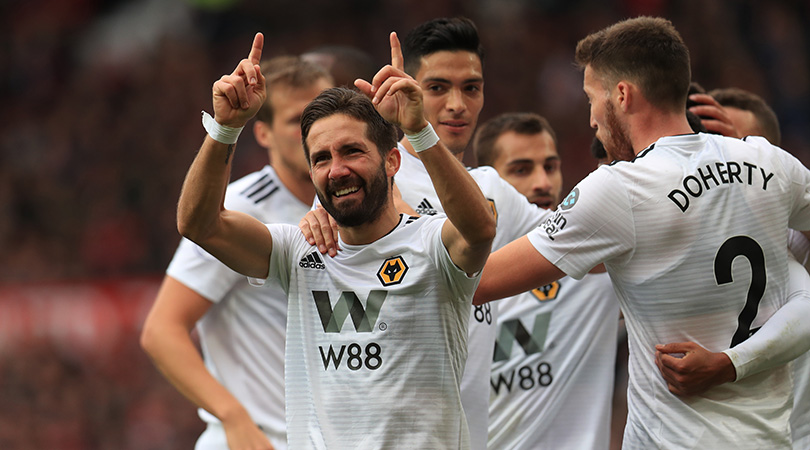
Arsenal
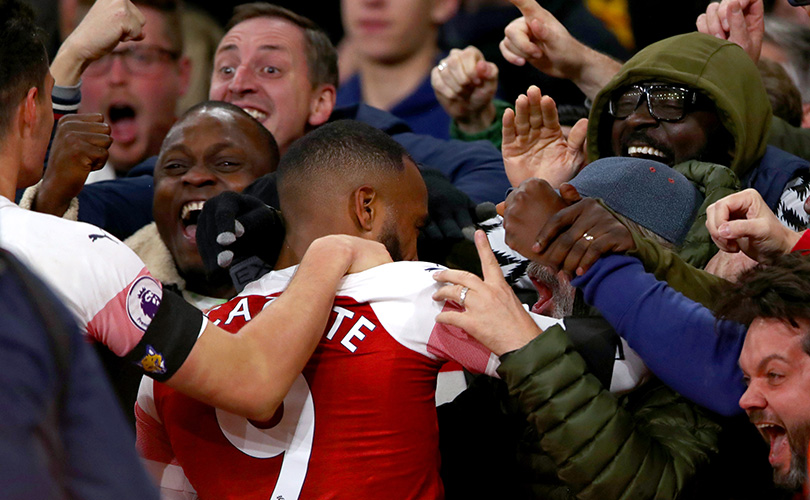
Strength – High-tempo attacks
Unai Emery’s attacking tactics have already clicked into place at the Emirates, which is a commendable achievement given the size of his task. After years of laid-back coaching from Arsene Wenger, Gunners players have responded well to the Spaniard’s rigorous demands.
Arsenal now play with greater urgency, looking for early forward passes in order to launch counter-attacks. Pierre-Emerick Aubameyang, Alexandre Lacazette and Henrikh Mkhitaryan have benefited most from the changes.
Weakness – Coping with transitions
All of that positive energy has created a disorganised overall shape, however, which is why Arsenal often get caught out when opponents win the ball. It doesn’t help having Granit Xhaka in central midfield (although he has notably improved over the last few weeks with Lucas Torreira alongside him), but it’s Emery’s use of ultra-attacking full-backs that has been the biggest problem.
Bournemouth
Get FourFourTwo Newsletter
The best features, fun and footballing quizzes, straight to your inbox every week.
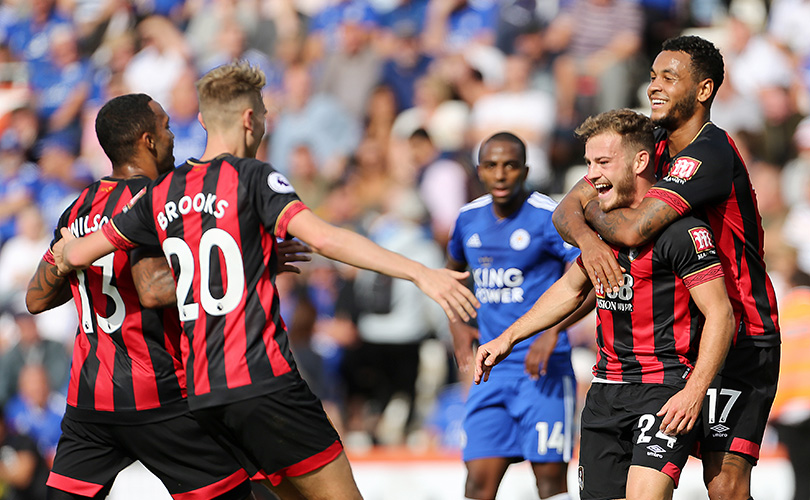
Strength – Fraser and Brooks on the counter
Eddie Howe has transitioned towards a counter-attacking mentality this season, which is getting the best out of Ryan Fraser and David Brooks. The former, with three goals and six assists in the Premier League already this season, is one of the best players outside the top six, while Brooks – signed from Sheffield United in the summer – has performed intelligently from the other flank.
Brooks tends to drift into the No.10 space, playing clever slide passes through for Fraser or striker Callum Wilson when Bournemouth break. The 21-year-old has scored three league goals so far, performing above expectations (he only started nine games in the Championship last season, remember) to help challenge the theory that Howe isn’t good at signing players.
Weakness – Defending crosses
Throughout the campaign Bournemouth’s biggest flaw has been in the full-back positions, partly because their new narrow defensive shape leaves them vulnerable to early crosses into the box. Newcastle, Manchester United and Burnley all scored directly from a cross in their respective victories over the Cherries.
Charlie Daniels and Simon Francis are good attacking full-backs, but their defensive work could be better. After Newcastle’s success before the international break, more opponents will be looking to exploit their vulnerability in the coming weeks.
Brighton
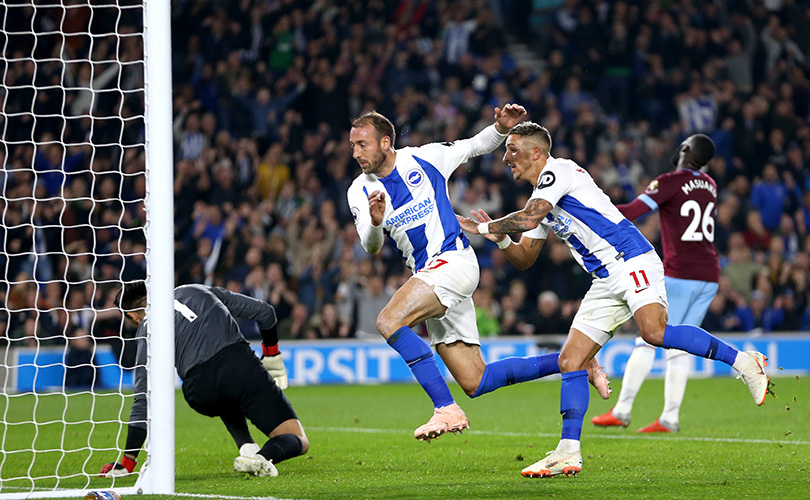
Strength – Attacking efficiency (at home)
There is something pleasingly simple about the number of one-goal wins Brighton are racking up at the Amex Stadium this season. The 35-year-old Glenn Murray has six goals in 2018/19, five of which have come on home turf and directly earned seven points.
Brighton know exactly what they’re doing. Chris Hughton has them very well organised at the back, and although they don’t create many chances, the Seagulls tend to be ruthless at home, particularly from set-pieces. Five of their 13 league goals have been from dead-balls.
Weakness – Individual errors
Lewis Dunk’s mistake at Goodison Park three weeks ago epitomised Brighton’s main concern. They are too error-prone at the back, often gifting possession to the opposition or failing to clear a simple ball.
Dunk made another huge error in a 2-2 draw with Fulham, Yves Bissouma was to blame for Mohamed Salah’s goal in Liverpool’s 1-0 win, and Dale Stephens’ reckless red card a fortnight ago cost Brighton at Cardiff.
Burnley
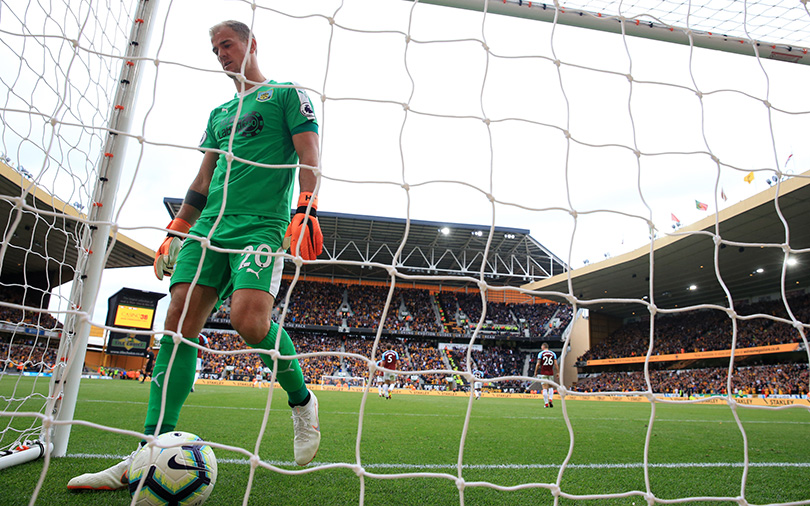
Strength – Johann Gudmundsson
There haven’t been many highlights for Burnley this season, but one player who has been more or less at the same level from their hugely successful 2017/18 season is Gudmundsson. With two goals and four assists, the Icelander has dragged the Clarets through a couple of key matches.
The 28-year-old scored once and assisted another in a crucial 2-1 win at Cardiff, as well as defending Ryan Fraser admirably in Burnley’s 4-0 win over Bournemouth. Gudmundsson’s tenacity has been crucial as heads have dropped.
Weakness – Leaky defence
It’s difficult to explain exactly what’s gone wrong for Sean Dyche. Perhaps it’s simply tiredness, with Burnley having started competitive football at the end of July, or maybe their luck has finally run out. The xG stats have always suggested they looked better defensively than they really were.
Alternatively, it could be Joe Hart. The former England goalkeeper is seen by some as a nervous player whose shouting and screaming unsettles those around him. Either way, something has affected the confidence of James Tarkowski and Ben Mee.
Cardiff
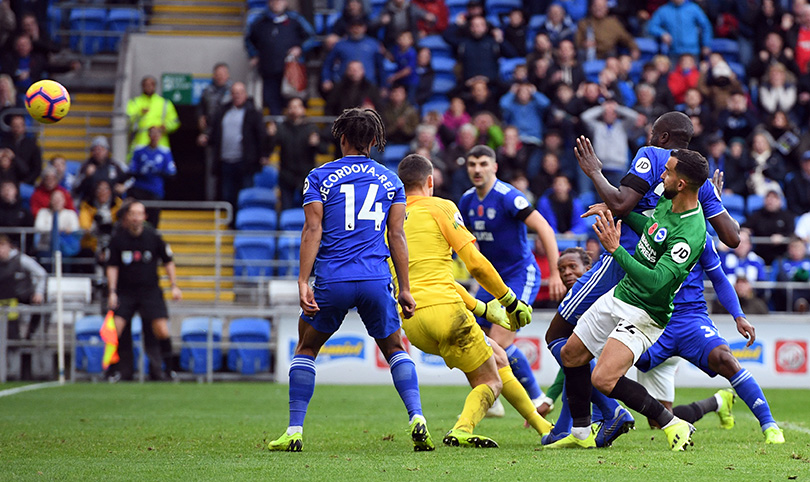
Strength – Battling spirit
Few people expected Cardiff to be quite so competitive at this level, and Neil Warnock’s tactical acumen isn’t the main reason for those surprise victories against Brighton and Fulham. Sheer force of will seems to be their biggest weapon.
Set-piece goals and goalmouth scrambles were a feature of both those wins, reflecting the battling spirit that unites the Bluebirds’ dressing room.
Weakness – lack of Premier League quality
That being said, theirs is the weakest squad in the division and an overall absence of Premier League quality will likely cost them a place in it. Callum Paterson and Josh Murphy have impressed so far, but this is a Championship squad.
Chelsea
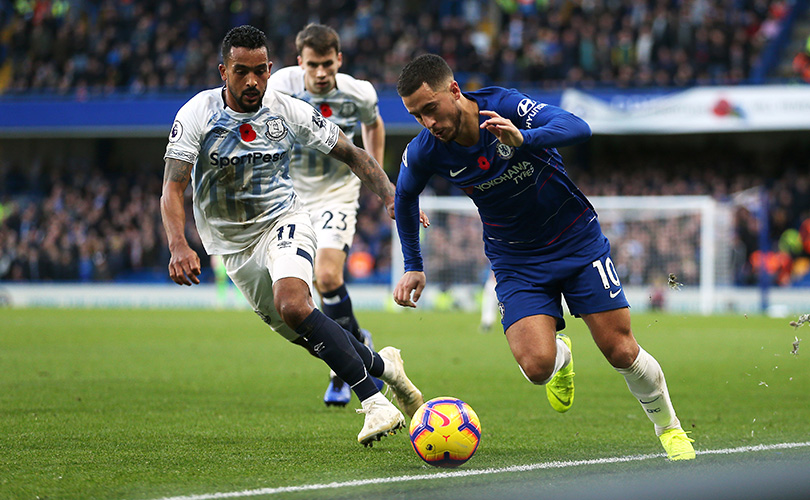
Strength – Eden Hazard’s form
Maurizio Sarri’s expansive tactics have breathed fresh life into Hazard, who has been given a free role for arguably for the first time in his Chelsea career. What’s more, with so many runners from midfield joining the Belgian, he tends to get more room on the left flank.
He is in the form of his life and has already amassed seven goals and four assists in just eight starts; thus, Hazard makes a goal contribution every 71 minutes, more than any other Premier League player.
Weakness – Increasingly predictable
Chelsea can be guilty of looking for Hazard too often. Their attacks invariably filter through Jorginho to the Belgian, which is why Everton were able to hold them to a goalless draw before the international break.
Marco Silva instructed his players to cut off the passing line to Hazard, and stuck Gylfi Sigurdsson on top of Jorginho. Sarri needs to add variety to Chelsea’s attacking build-up play or risk more teams negating the influence of their talisman.
Crystal Palace
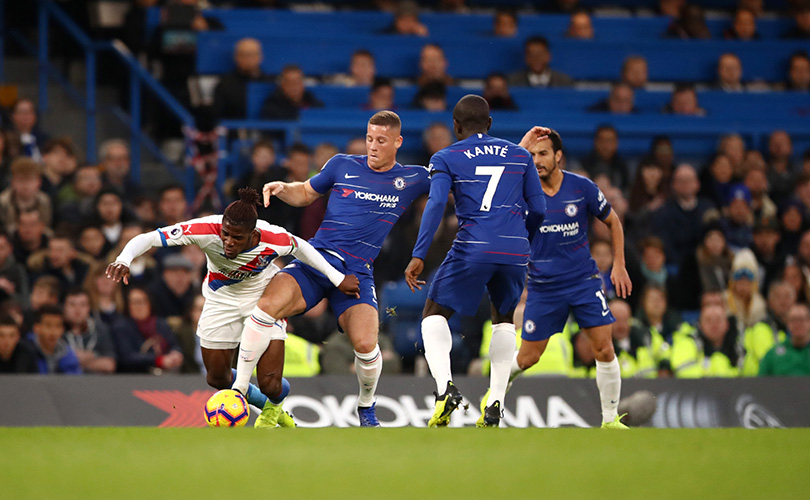
Strength – Wilfried Zaha’s brilliance
One of the most joyous footballers in the country, Zaha can run a game like few others in the Premier League. His dribbles are still effective even though opponents triple-up on the Ivorian, while his influence on the club is highlighted in that famous statistic: Palace have now lost their last league 13 matches without him, stretching back to January 2017.
Weakness – One-dimensional counter-attacks
Naturally, this has made them one-dimensional. Roy Hodgson’s deep-lying 4-4-2 piles pressure on Zaha to perform miracles on his own; the 26-year-old often makes it through a crowd only to find he is completely isolated.
What Palace really lack is a strong centre-forward for Zaha to feed off, although the poor technical quality of their clunky midfield doesn’t help.
Everton
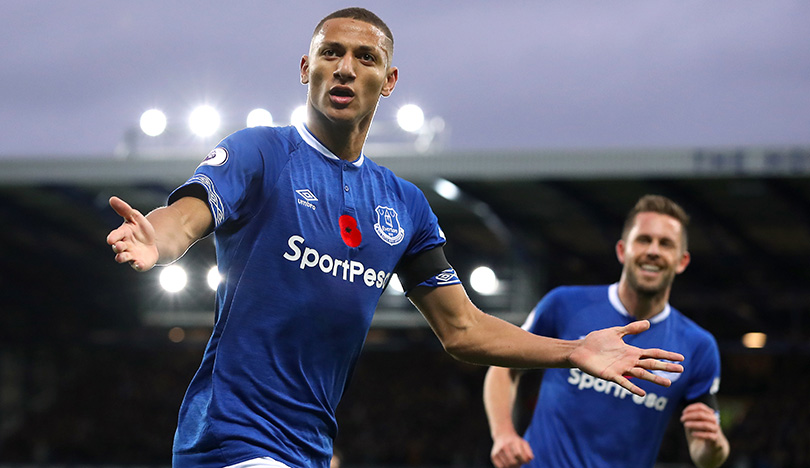
Strength – Silva’s re-positioning of Sigurdsson and Richarlison
It’s taken a little while for Silva to get things going at Goodison Park, but his decision to convert Richarlison into a striker was a stroke of genius. The Brazilian’s clever runs give Sigurdsson – finally restored to his favoured No.10 role – something to aim at, while the switch has freed up space on the left to play the impressive Bernard.
Sigurdsson and Richarlison have scored 11 of Everton’s 19 league goals, but it isn’t just their direct contributions that make the partnership so effective. Their form appears to be drawing opposition defences narrower, benefiting Lucas Digne and Seamus Coleman. Both Everton full-backs have impressed in recent weeks.
Weakness – away form
Everton have won 13 of their 19 points (68%) at Goodison Park this season. The Toffees have also only scored seven times in six away matches, winning six points, primarily because Silva’s attack-minded approach is a little too open on the road.
The Portuguese has always boasted an exceptional home record thanks to his bullish high-pressing football, but the flip side is that his teams often struggle away. Everton stand no chance of breaking the top six unless he adapts his approach.
Fulham
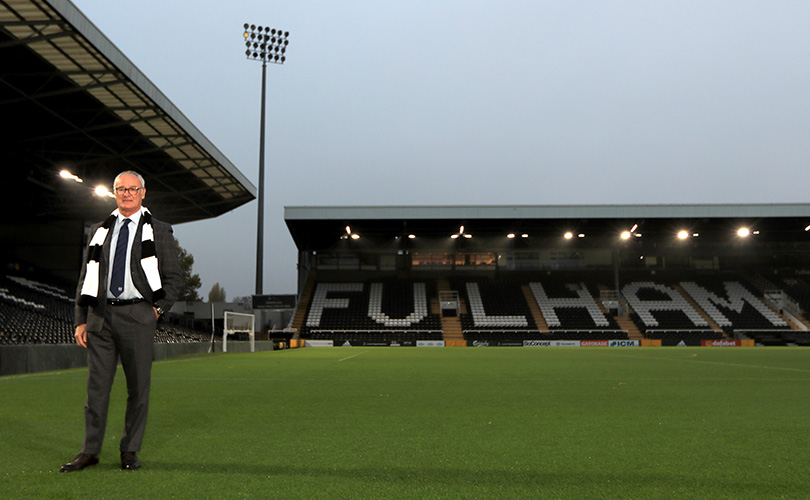
Strength – The right manager to fix things
It’s been a truly dreadful campaign for poor Fulham fans so far, but their luck could be about to change now that Claudio Ranieri has been brought in during the international break. The Italian’s defensive coaching, plus his desire to play counter-attacking football, makes him a very good fit for the Cottagers’ squad.
A deeper defensive line and more direct approach won’t just plug some of the leaks in Fulham’s defence – Ryan Sessegnon, Andre Schurrle, Jean Michel Seri and Luciano Vietto should all enjoy counter-attacking into open spaces behind the opposition defence. Given that Fulham have failed to score in each of their last four matches, a dramatic tactical change is needed.
Weakness – Central midfield
Poor Kevin McDonald was hopelessly overworked at the base of midfield under Slavisa Jokanovic, but in truth, he also isn’t quite good enough. Fulham have been remarkably porous through the middle of the pitch, so signing a combative defensive midfielder will surely be Ranieri’s main priority in January.
Huddersfield
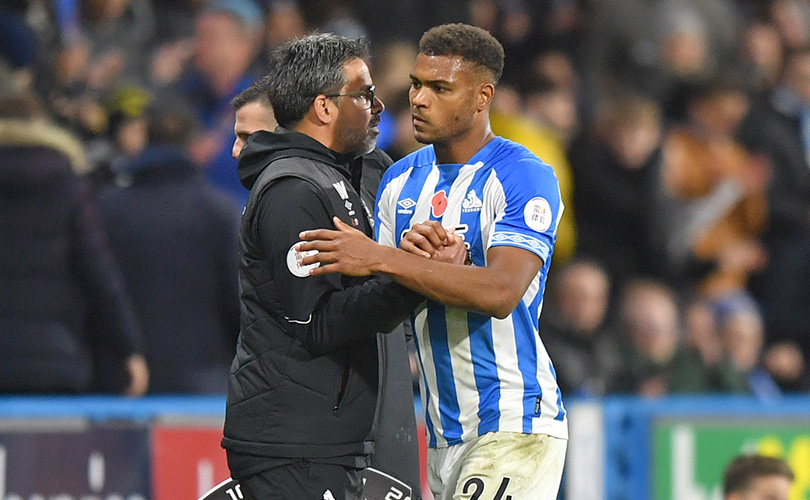
Strength – Billing and Mooy partnership
There is a strong engine in the Huddersfield team, which explains why a Championship-quality squad that can’t score goals remains competitive. Aaron Mooy and Philip Billing were instrumental in Huddersfield winning four points from their last two games.
Their composure in possession forms the foundation of David Wagner’s tactics, although with such little quality around them, neither Billing nor Mooy have made headlines – or earned an assist.
Weakness – No cutting edge in attack
Huddersfield have scored a meagre six goals, and that’s partly because Wagner is deploying a cagey 3-5-1-1 this season. Alex Pritchard is a silky player but tends to find himself isolated in attack, while Steve Mounié and Laurent Depoitre aren’t athletic enough to create space for themselves in the box.
Neither striker has scored a league goal. ‘Own goal’ is the Terriers’ joint-top scorer with one. Two of the five goals netted by Huddersfield players have been from set-pieces. It’s impossible to survive with statistics like these.
Leicester
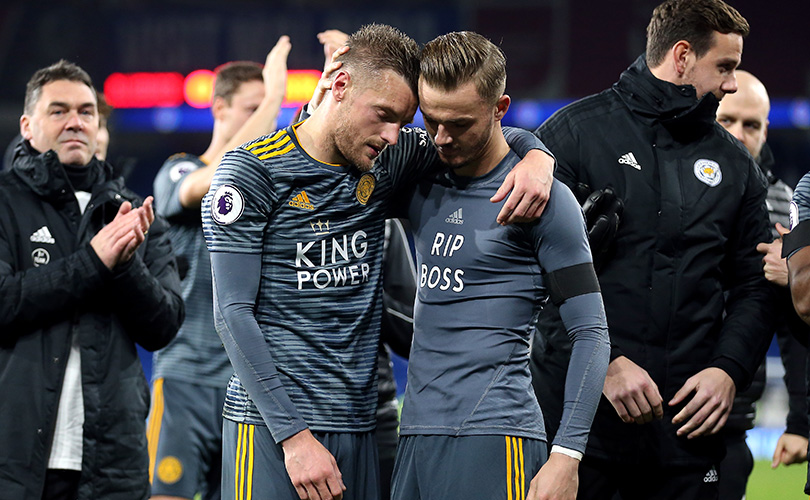
Strength – James Maddison
Among the signings of the summer, Maddison has lit up the Premier League with some outstanding performances for Leicester. His playmaking ability has clearly improved the output of team-mate Demarai Gray, while Maddison’s eye for goal (three to his name so far) has helped fill the gaping void left by Riyad Mahrez.
Maddison is unfortunate not to have picked up his first England cap yet, but it’s only a matter of time for a 21-year-old playing with the swagger and maturity of a much more experienced attacking midfielder.
Weakness – scoring goals
Jamie Vardy has always struggled in teams that don’t play direct counter-attacking football, and so it’s no surprise that he isn’t scoring under Claude Puel. Leicester need to raise the tempo in the final third.
Liverpool
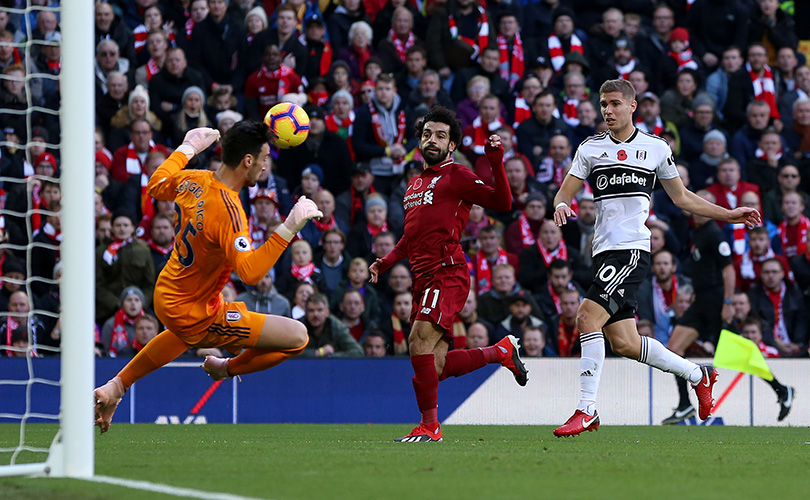
Strength – Breaking down defensive opponents
Jurgen Klopp doesn’t have a good record against clubs in the relegation zone, but his Liverpool team are beginning to improve in this regard. They are no longer stumped by ultra-defensive opponents who deny space in behind for Sadio Mané and Mohamed Salah, and instead happily change up their approach.
The best example of this was the 2-0 win against Fulham, in which Liverpool frequently played sweeping diagonal balls into the channels to stretch defenders wide and force them to backpedal. It’s a direct, un-Klopp-like system that surprised Slavisa Jokanovic’s side – as it has Huddersfield and Crystal Palace this season.
SEE ALSO Mo problems? The pros and cons of Jurgen Klopp using Mohamed Salah as a No.9
Weakness – Central midfield
The biggest disappointment for Liverpool fans has been the performances of Naby Keita and Fabinho, their two marquee summer signings who were supposed to improve a fairly uninspiring central midfield. James Milner and Georginio Wijnaldum have been much better than expected – perhaps spurred on by fresh competition – but some oddly low-tempo Liverpool performances seem to have been the result of a lack of quality in the middle.
Fabinho is taking a long time to adapt, and his lack of speed on the turn is potentially a huge problem for a side built on quick transitions. Keita started well but has tailed off of late, although he has been hampered by injury somewhat.
Manchester City
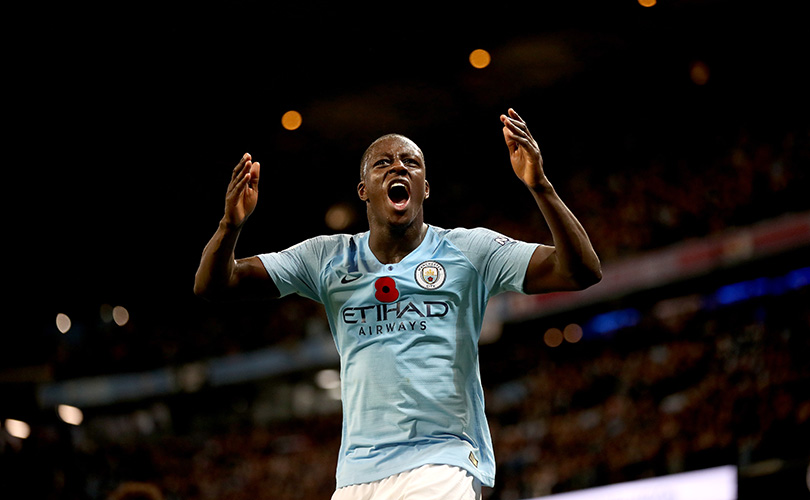
Strength – attacking variation without De Bruyne
Manchester City have so many strengths that it’s hard to pick just one, but the most surprisingly impressive thing about Pep Guardiola’s team this season is the variety in their attacking football despite Kevin De Bruyne’s injuries. Last season it seemed as though everything was channelled through the Belgian, yet they’ve carried on as if he was simply a luxury they could afford to lose.
Bernardo Silva has been sensational, technically occupying the same spaces as De Bruyne but playing completely differently. The Portuguese makes weaving runs through the centre, opening up the pitch by piercing the lines himself rather than arrowing through balls like City’s No.17.
Weakness – Benjamin Mendy’s defending
Although Mendy’s crossing from the left has added a new dimension going forward, he doesn’t cover the spaces nearly as well as Fabian Delph did. The Frenchman is a bit erratic, sometimes abandoning his post at the wrong moment or failing to track a runner.
It hasn’t hurt City yet – and his attacking contributions have been magnificent – but eventually his positional errors will be exposed by a ruthless right winger. For a perfectionist like Guardiola, Mendy’s long-term place in the first XI is far from safe.
Manchester United
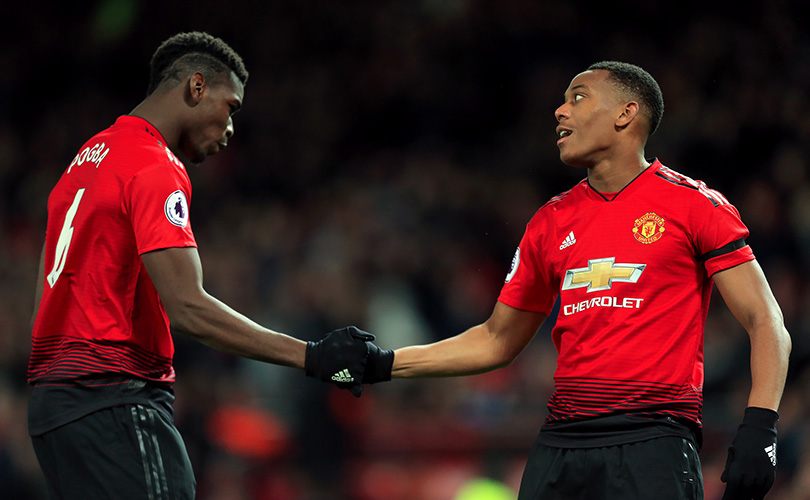
Strength – Pogba and Martial
Anthony Martial has come alive this season. The Frenchman has reacted in the best possible manner after failing to make France’s World Cup squad in the summer, scoring six goals in seven starts for United in the Premier League. He is fast becoming the first name on the teamsheet, combining on the left wing with his compatriot Paul Pogba.
Pogba remains hit and miss at times, but he is invariably the catalyst when United mount second-half comebacks. In a wholly disappointing first third of the season, the French pair have shown fans inside Old Trafford just how creative and exciting this United team could be.
Weakness – low-energy first halves
Jose Mourinho’s most significant tactical issue is dropping deep right from kick-off; uniquely among the big clubs, United don’t press high, and by consistently backing off they embolden the opposition. This explains why they struggle for tempo or fluency in the first half-hour of matches.
The Reds should be setting a confrontational precedent. By deploying such a deep defensive line they are inviting pressure from clubs hungry to twist the knife.
Newcastle
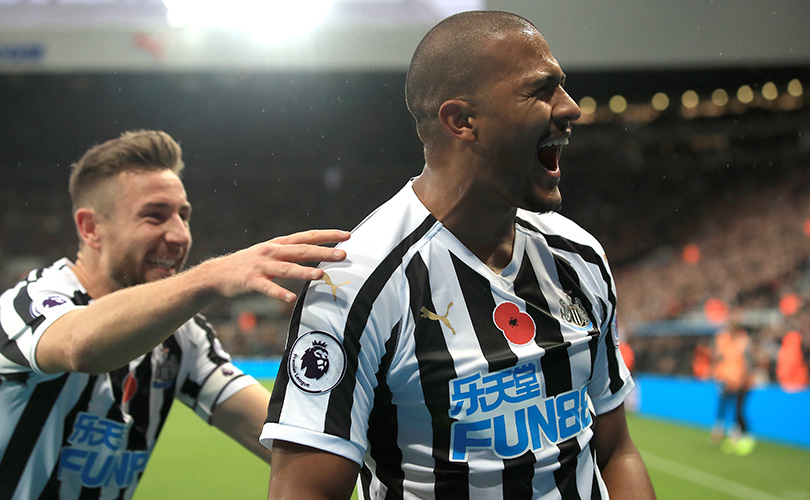
Strength – Feeding Rondon
Up until three weeks ago there was nothing at all positive to say about Rafa Benitez’s Newcastle, but after earning seven points from their last three matches, the Magpies are beginning to replicate their fine 2017/18 form.
Salomon Rondon finally scored his first league goals for the club in a 2-0 win against Bournemouth a fortnight ago. This was a match defined by Newcastle players constantly searching for the Venezuelan’s head, just as they did in a 1-0 win against Watford a week earlier. He won eight aerial challenges in both of those matches.
Weakness – Too defensive
Benitez’s basic tactical shape is far too negative. The Newcastle squad certainly isn’t high on quality but the Spaniard could afford to open up a little, deploying Jonjo Shelvey higher up the pitch and trusting the pace of Kenedy.
Instead, the Magpies always sit back and always look to soak up pressure, which is why there have only been 24 goals in their matches this season (nine for, 15 against) – the least in the division. They’re getting used to being last on Match of the Day.
Southampton
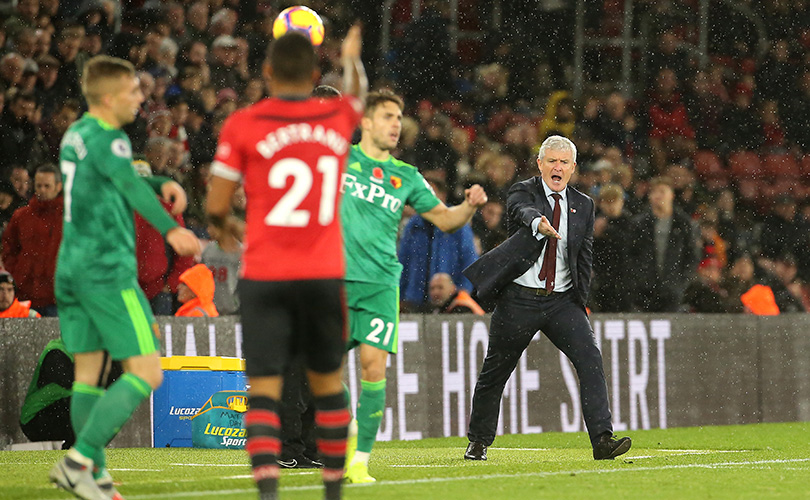
Strength – A midfield to build on
It’s been just as dull at St. Mary’s, and yet hidden away is a central midfield partnership that has the potential to be one of the league’s most interesting. Pierre-Emile Hojbjerg and Mario Lemina are very talented footballers who could, under different management, help rediscover Southampton’s mojo.
Hojbjerg, who Pep Guardiola once thought would be the foundation of his Bayern Munich team, continues to improve his game with some quietly elegant performances. Ditto Lemina, and both are underrated for their defensive contributions – they’ve averaged a combined 5.1 tackles and 5.1 interceptions per game in 2018/19.
Weakness – Aimless tactics
It’s difficult to work out exactly what Mark Hughes is trying to do at Southampton. The football is uninspiring and the tactics strangely without purpose, which is why fans appear to have run out of patience with their former player. Should Claudio Ranieri make a quick start at Fulham, that could be enough to convince the Southampton board to make a change of their own.
Tottenham
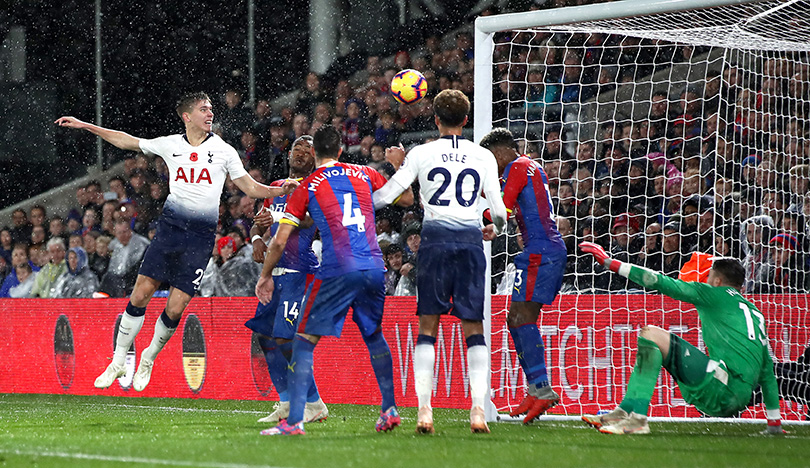
Strength – Set-pieces
Spurs haven’t performed particularly well in their Premier League matches this season and yet, statistically at least, are enjoying their best start under Mauricio Pochettino. Winning ugly is a testament to their resilience, but also to their new ability to frequently score from set-pieces.
Pochettino’s side have scored eight times from corners, free-kicks and penalties so far this season – the second-most in the division behind Bournemouth with 10. Kieran Trippier’s expert delivery helps, although Harry Kane’s poacher’s instinct – on show as he scored the winner from a free-kick for England against Croatia – is always a threat.
Weakness – Sluggish midfield
For quite some time now, Spurs have needed a sharper, quicker central midfielder to up the tempo of their possession-based football. A certain sluggishness defines Mousa Dembele, Victor Wanyama and Eric Dier.
Harry Winks is improving this issue, although Pochettino still needs to go searching for a more dynamic defensive middle man in the winter window.
Watford
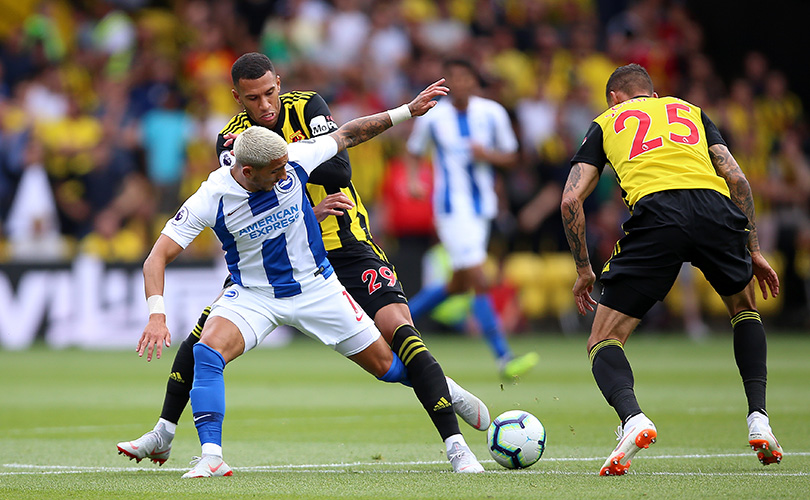
Strength – Gracia’s aggressive midfield
Javi Gracia’s high-pressing football is predicated on playing four battling central midfielders at the same time, and Watford’s most impressive feature is the fluency of their 4-2-2-2 formation. Will Hughes and Roberto Pereyra provide the creativity in the final third, while Abdoulaye Doucoure and Etienne Capoue back them up with strong tackles.
Capoue is perhaps the most underrated player in the division: his 6.1 tackles and interceptions per match are the third-most in the Premier League.
Weakness – goalscoring
Watford’s goals have started to dry up over the past couple of months, which is unsurprising given how much they relied on a flurry from Pereyra at the start of the season. Their top-scoring forward is Andre Gray with three – and the Englishman hasn’t scored since September 22.
West Ham
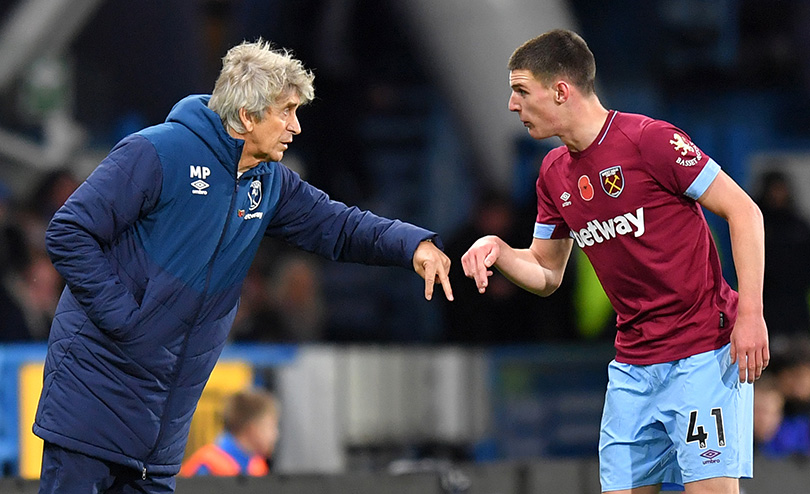
Strength – Pellegrini’s problem solving
At the beginning of the season it looked like Manuel Pellegrini was a bad fit for West Ham. The Chilean started out by playing the same attacking 4-2-3-1 formation that facilitated Manchester City’s collapse in his final year, in that it contained ageing full-backs and a midfield that was disconnected from the defence.
But Pellegrini has dramatically altered West Ham’s playing style since then, embracing a counter-attacking approach and slotting Declan Rice into defensive midfield. Along with Robert Snodgrass in a new box-to-box role, Rice has helped transform the Hammers’ fortunes.
Weakness – central midfield
That being said, the middle of the park is still their weakest area. Rice may not be able to run the midfield for an entire season, while both Jack Wilshere and Mark Noble are too slow for the pace of the Premier League today.
Carlos Sanchez was arguably a bad signing too, leaving Pellegrini in search of a more robust partner for Rice and Snodgrass.
Wolves
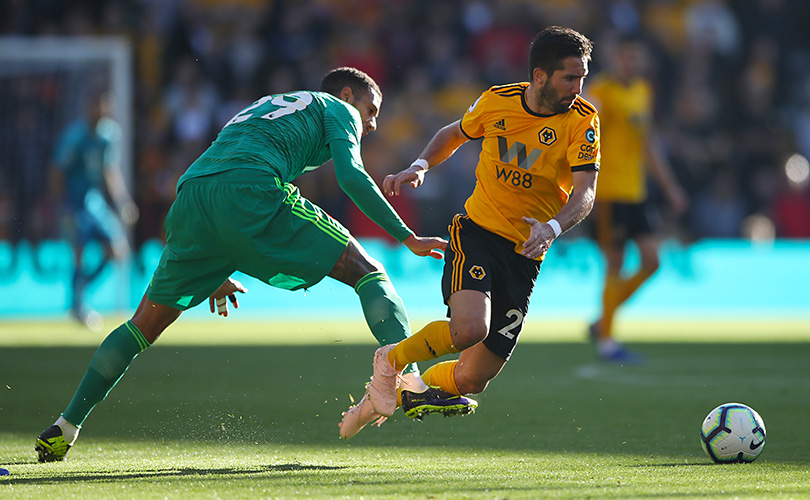
Strength – Unusual formation
Nobody else in the Premier League consistently uses a 3-4-2-1 formation, which hands Wolves a slight advantage in the majority of evenly matched games. Their system, executed well by a consistent first XI, frees Jonny and Matt Doherty to bomb into the penalty area unmarked.
It also ensures there are plenty of bodies around the central midfield pair of Joao Moutinho and Ruben Neves, two Portuguese players who have taken to the Premier League remarkably quickly. It is their assuredness, coupled with Nuno Espirito Santo’s use of a back three, which explains why Wolves have the best defensive record outside the top for.
Weakness – Finishing
Whether it’s bad luck or poor finishing, Wolves don’t score enough goals for the number of chances they create. They rank fifth in the table for shots on goal (14.5 per match), fourth for key passes (10.8 per match), and as per understat.com, have an xG of 17.33 – 5.33 lower than the 12 times they have found the net.
Only Southampton have a wider gap between their actual goals and expected goals. Raul Jimenez, with three in 12, needs to be scoring more often.
